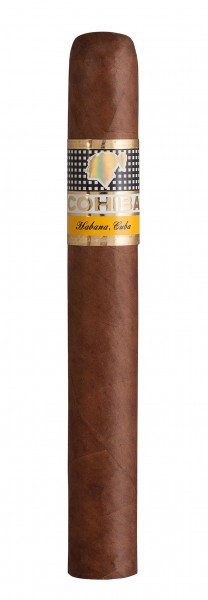
- Order number: SW10017
- Open text field 1: Cohiba, Siglo, II
Worth knowing
From the very beginning, this Mareva aka Petit Corona has also belonged to the „Linea 1492“. The classic Vítola is one of the world's most popular cigar formats and was missing from the Cohiba portfolio before 1994. Like the other slim representatives of the series (I, III and V), it is somewhat stronger than the thicker ones. The smoking time is 35 – 50 minutes.
Aroma
The thin ring gauge results in a somewhat more concentrated and tart aroma than that of the voluminous „Siglos“. Here, the focus is on spicy Röst and nutty aromas, of course without missing the fragrant, elegant elegance that unites all Cohibas. Also typical is the creamy smoke. In the second half, hints of mocha and cocoa complement the noble taste. The strength is just above medium. The production quality is, as with all Cohibas, beyond all doubt. In terms of the blend, this gorgeous little Corona could just as well belong to the classic series.
| Cigar brand: | Cohiba |
| Warengruppe: | Zigarren |
| Zigarrenserie: | Cohiba Siglo |
| Format: | Mareva, Petit Corona |
| Ringmaß: | 42 |
| Länge in cm: | 12,90 |
| Country of origin tobacco: | Kuba |
| Country of origin binder: | Kuba |
| Country of origin cover sheet: | Kuba |
| Stärke: | mittel |
| Flavors: | Kakao, Nut, Roasted flavours |

Cohiba ist die Spitzenmarke unter den Habanos. Sie wurde 1966 ganz persönlich für den Máximo Líder Fidel Castro erschaffen. Ihr Entstehungsort war lange Zeit ein großes Geheimnis, denn niemand sollte wissen, woher sie stammte. Im Grunde war Cohiba lange Zeit die inoffizielle Hausmarke der Staatsführung und außerhalb dieses Zirkels praktisch nicht zu ergattern. Mit einer großen Ausnahme: als Geschenk, welches nur hochrangigen Staatsgästen vorbehalten blieb. Erst 1982 entschloss man sich, ein limitiertes Kontingent auch in den freien Handel zu bringen. Spätestens zu diesem Zeitpunkt wurde auch der Ort der Entstehung unter den Aficionados dieser Welt richtig bekannt: die Manufaktur El Laguito in Havanna. Die ehemalige Villa eines Zuckerbarons ist die Wiege dieser ersten postrevolutionären Marke. Sie liegt ein gutes Stück außerhalb der Stadt im Stadtteil Cubanacán, deshalb konnte ihre Lage so lange geheim bleiben. Hier wird die Auslese der Auslese zu einer Cohiba zusammengestellt – zum Nonplusultra unter den Habanos.
« Entdecken Sie passendes Zubehör zur Ihrer Lieblings-Zigarrenmarke »











































